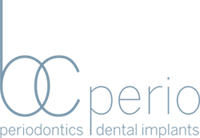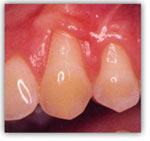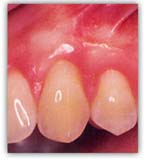Periodontal procedures are available to stop further dental problems and gum recession, and/or to improve the esthetics of your gum line.
Exposed tooth parts are the result of gum recession. Perhaps you wish to enhance your smile by covering one or more of these roots that make your teeth appear too long. Or, maybe you’re not bothered by the appearance of these areas, but you cringe because the exposed roots are sensitive to hot or cold foods and liquids.
Your gums may have receded for a variety of reasons, including aggressive tooth brushing or periodontal disease. You may not be in control of what caused the recession, but prior to treatment your periodontist will help you identify the factors contributing to the problem. Once these contributing factors are controlled, a soft tissue graft procedure will repair the defect and help to prevent additional recession and bone loss.
Soft tissue grafts can be used to cover roots or develop gum tissue which is absent due to excessive gingival recession.
During this procedure, Dr. Crump takes gum tissue from your palate or another donor source to cover the exposed root. this can be done for one tooth or several teeth to even your gum line and reduce sensitivity.
What are the benefits of this procedure?
A soft tissue graft can reduce further recession and bone loss. In some cases, it can cover exposed roots to protect them from decay; this may reduce tooth sensitivity and improve esthetics of your smile. A beautiful new smile and improved periodontal health — your keys to smiling, eating and speaking with comfort and confidence.


